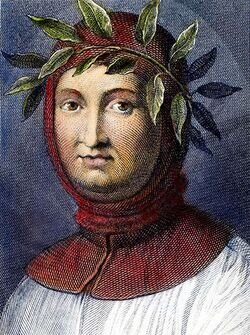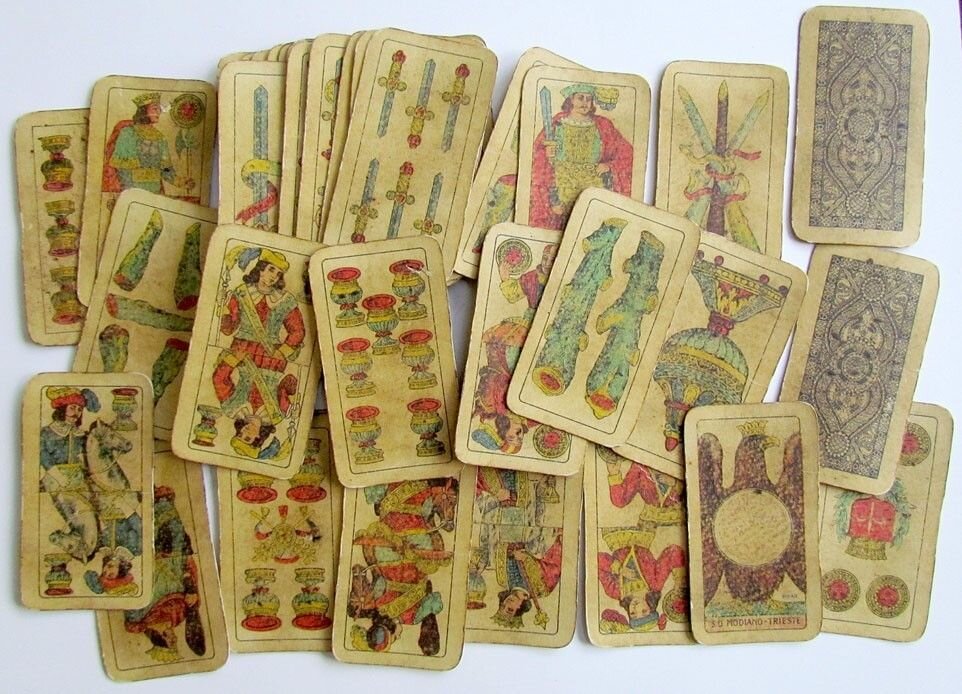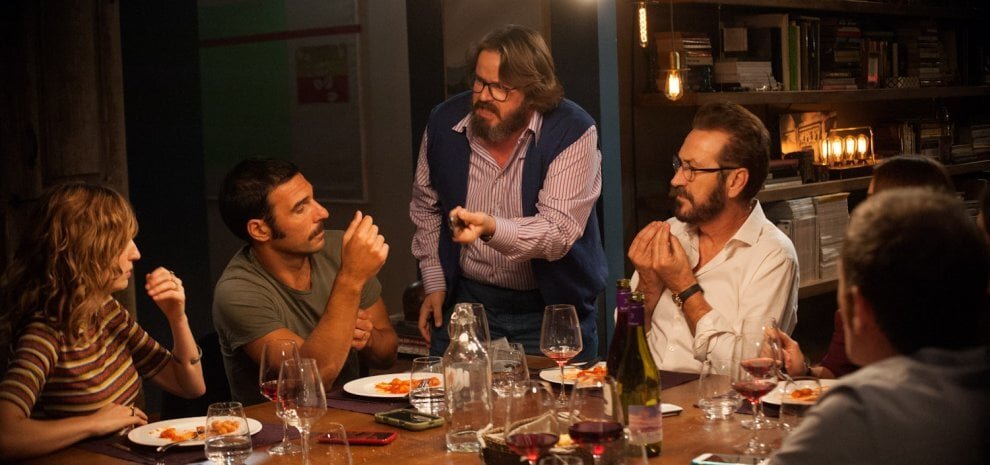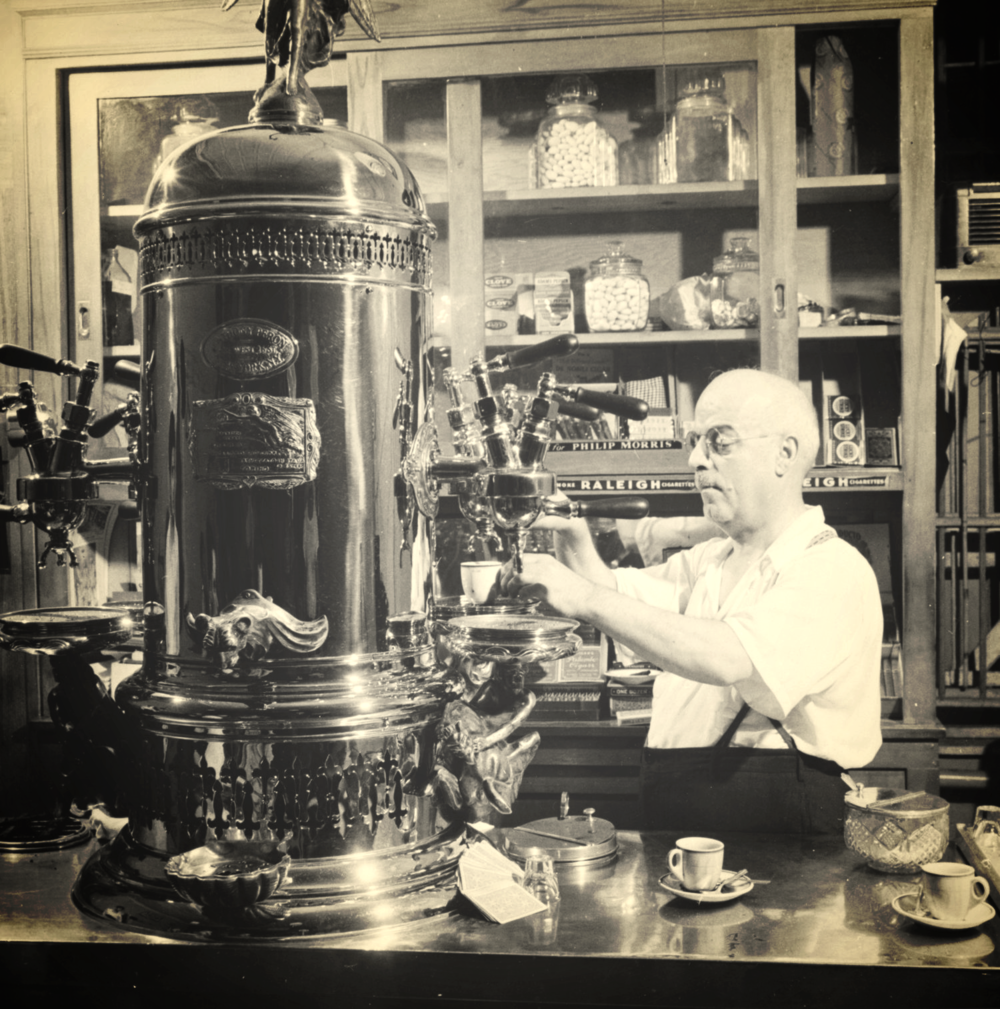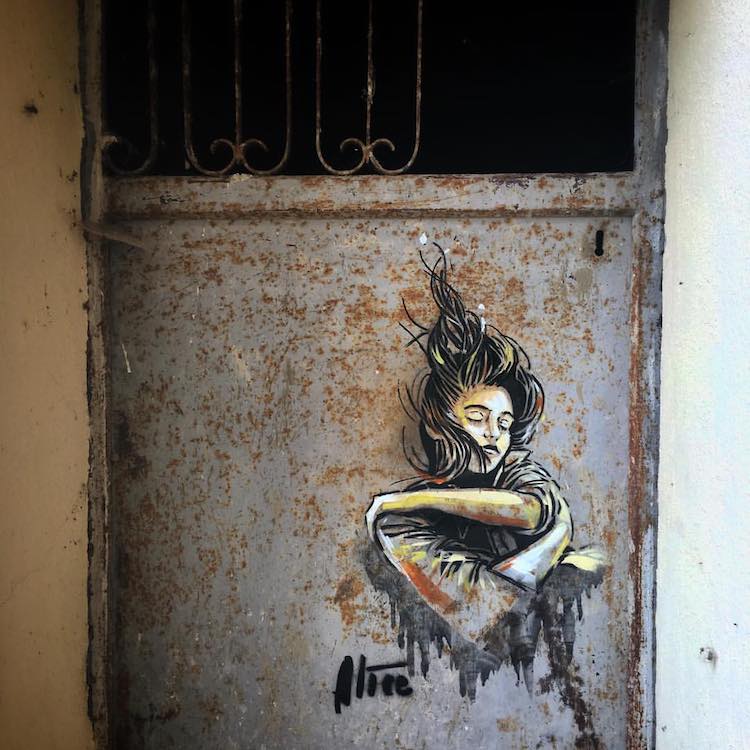The University of Bologna: A Brief History
In case you weren’t already overthinking going back for Grad School.
La Piazza Maggiore in Bologna
by Brian Alcamo
Students are heading back to classrooms after a summer of fun. For some, the break from the classroom has been even longer, with in-person learning being replaced by remote alternatives to circumvent pandemic lockdowns. While universities have been around for a long time, one has stood the test of time longer than all the others. Italy’s University of Bologna, l’Universitá di Bologna, is both the oldest and longest-functioning university in the western world, and its storied history is fascinating. Find out more below!
The Beginning
The University of Bologna is considered by most to be the first Western university, with scholarly activity dating all the way back to 1088 C.E. First founded as the (private) School of Bologna, the historic place of learning coincided with the establishment of the Studium of Bologna. Because of a collective of a few dedicated students, the School of Bologna’s ascent as a leading site of learning began to coincide with the city’s growth as an economic powerhouse. By the 12th Century, the city had transformed from being known as La Dotta (The Learned) to La Grassa (The Fat), due to its rapid rise in wealth. Once il Comune (the municipality) realized that the school was attracting young wealth, it began to enact policy aiming to protect and favor the school. Private homes, monasteries, and public areas were rented out to provide adequate space for the droves of new learners. This created a robust, geographically decentralized network of educational nodes, differing from the typical “campus” model that many Americans are familiar with today.
Bologna’s Archiginnasio, which was not yet built at the university’s start
The 13th century saw the University's graduates’ reputations on the rise, especially its Law School and Art School students, who were seen as providing foundational legal and cultural foundations for an emerging European society. Law School students formed organizations meant to establish a system of mutual support. These were originally based on students’ place of origins (known as Nationes) which slowly turned into guilds known as Universitates.
A Change in Power Dynamics
The fourteenth century saw a tightening of student and teacher autonomy as the Comune placed more controlling decrees on the school. Teachers became public employees and their performance declined with their academic fate coinciding with the shifting economic winds of the city. During the fifteenth century, the school’s fame helped maintain its student body while its arts program was reinvigorated with Renaissance ideas. This century was also the height of Bologna’s Bentivoglio family, and teachers began to be effectively “bought out” by the wealth of the city’s de facto lords. This newfound corruption led to the erosion of both the university and the commune’s freedom.
Vocabulary for Your Next Semester in Italia
Semestre - Semester
Il programma di studio - Syllabus
Il compagno di classe - Classmate
Studiare - To study
Consulente academico - Academic advisor
Esame - test
Tema, saggio - essay
In the sixteenth century, The Council of Trent and the construction of the Archiginnasio Palace both ended up driving out students, with the Palace replacing the school’s geographically decentralized nature as a one-stop-shop location for University activity, becoming an easily governed location where Papal Rome could impose Catholicism on the student body. After these reforms, the school’s performance saw a two-century lull, with the seventeenth and most of the eighteenth century seeing little innovation and being left out of the rest of Europe’s Renaissance fun. The sad ship began to slowly (and we mean slowly) turn around with the new Academy of Sciences of the Institute of Bologna, which provided a space for critiquing the Church and aristocracy.
The Library at the Institute of Sciences
Back in the Saddle
Interestingly enough, the University saw a Renaissance of its own when the Italian peninsula came under control of Napoleon Bonaparte’s French Empire. The Studium became a public university and moved its center of operations to the Palazzo Poggi, which brought a new artistic and cultural center to Bologna. Unfortunately, when the French Empire receded and the papacy was restored, many changes were repealed.
Il Risorgimento, or the Italian Unification, finally brought respect and prestige back to the Studium, when forces at the helm of the unification sought to construct the narrative of a common Italian history. Bologna had once again become one of the most important cities in the new country.
In the twentieth century, the university began to occupy historic buildings around the city, positioning itself as a fulcrum of urban life. In 1988, a celebration of the university's ninth century reinforced the school’s reputation as a location that honors the independence and freedom of teaching and its history as the Alma Mater Studiorum.
Some Famous Alumni
The University’s status as an important site of educational patrimony was further cemented in 1999 when European diplomats came to the University to sign the Bologna Declaration. This signing established the Bologna Process, a series of meetings with the purpose of establishing and maintaining higher-educational compatibility between European countries. The Process follows a qualifications framework that uses the university levels of Bachelors, Masters, and Doctoral degrees as guidelines for determining educational achievement (according to the European Credit Transfer and Accumulation System, or ECTS).
Nowadays in the twenty-first century, the university has expanded outwards into Bologna’s suburbs, moving the locations of its course offerings. It also has created the first multicampus in italy, with satellite campuses throughout Emilia-Romagna.
Thanks for Reading!
Want to go back to school? Learning Italian provides you with the skills you need to make education in Italy a real possibility. Comment your study plans below, and be sure to share this post with a friend!
Here's The Skinny on LGBTQIA+ Rights in Italy
Ever wondered what Italian law has to say about LGBTQIA+ individuals? Get the facts here!
by Brian Alcamo
Italy is known for so many fabulous things: historic artwork, breathtaking landscapes, and mouth-watering food being a few. What you may not think of when you hear the word “Italy,” though, is Queer rights. While Italy only legalized same-sex civil unions (not marriage) back in 2016, its history of queer rights and discrimination is rich and complex.
Back in 1805, the Napoleonic Kingdom of Italy, the Kingdom of Naples, and other French client states in Europe adopted the Napoleonic Code which effectively legalized homosexuality. However, in 1815, Napoleon lost his grip on Italy and the previous monarchies were gradually restored along with their previous codes of law that banned homosexual activity.
In 1859, the Kingdom of Sardinia changed its laws to criminalize homosexual acts between men. As it so happens, the Kingdom of Sardinia is the Kingdom that spearheaded Italian unification (il Risorgimento). As it was unifying Italy, the Kingdom was also unifying Italy’s laws. When the system of law changed, homosexual acts between men became illegal throughout Italy. The only region where this law was not put into effect was in the Kingdom of the Two Sicilies, which avoided the law because the new government was taking into account “the particular characteristics of those that lived in the South.”
In 1889, homosexuality was decriminalized with the arrival of the Zanardelli Code, started by Justice Minister Giuseppe Zanardelli. As long as it did not involve violence or “public scandals,” homosexuality was not punishable by law. That being said, homosexuality was considered a “sin against religion or privacy.” The new code, while it did keep homosexuality out of the eyes of the law, also worked to create a “don’t ask, don’t tell” policy when it came to being gay. Unwittingly, some cities still took advantage of the new legal gray area, with Venice turning into— dare we say it was “popping off” as— the European gay destination of choice.
This policy continued on in the 1930s when a new code was introduced alongside Italy’s new fascist regime. The new Rocco Code reinforced a “don’t ask, don’t tell” spirit surrounding homosexuality in Italy not out of a nascently inclusive agenda, but because Italian fascists wanted to deny the existence of gay people in the country. The code read that “It will not be punished because the vicious vice of homosexuality in Italy is not so widespread that it requires legal intervention.” This left persecution of homosexuality up to the Catholic Church.
“Where are they now?”
Despite this “out of sight, out of mind,” relationship that exists between queer people and the Italian government, some progress has been made since the turn of the millennium. In 2003, the entire country of Italy made discrimination based on sexual orientation illegal in compliance with EU guidelines. Tuscany became the first Italian region to successfully implement legislation that prohibits discrimination against homosexuals (in the domains of education, employment, public services, and accommodations). This legislation was challenged at the national level, and eventually the section of the law mentioning accommodations was removed while the rest of the legislation remained intact. Piedmont enacted a similar law in 2006. Same-sex civil unions were made legal in 2016.
The Catholic Church is still making life difficult for queer Italians. While protections against racial and religious discrimination have been codified, protections on the grounds of gender and sexual orientation have yet to be put into effect. A large force in this delay is the conservative political party Brothers of Italy which represents the country’s Catholic bishops.
Italian Vocabulary For Talking About Queer Rights
I diritti - Rights
Omosessuale - Homosexual
Arcigay - Italy’s biggest LGBTQIA+ activist group
Identità di genere - Gender identity
Orientamento sessuale - Sexual orientation
Back in 2020, a new law, known as the Zan Bill, was being cooked up by the Italian government to begin protecting people based on their gender and sexual orientation. A priest in Puglia, a region in Italy’s Mezzogiorno (the South) even held a vigil to pray that the law would fail. The law, was approved by Italy’s lower house of parliament back in early November of 2020. It saught to “integrate an existing law and extend protection to women, LBGTQ+ and people with disabilities from discrimination based on gender identity and expression, sexual orientation, ableism.” Many people were not pleased.
While the Italian Senate continues to examine the Zan Bill, the Vatican has decided to voice some concerns, saying the bill attacks the Italian Catholic community’s freedom of beliefs. Whether the Zan Bill will pass in the Senate is still unknown, but make sure to check out some Italian news sites to brush up on your Italian and keep up with the latest happenings.
Thanks for Reading!
Were you surprised to learn about Italy’s Queer rights history? Comment below, and share this article with your Italy-loving friends.
Thumbnail photo by Luis Cortés.
Scopa: A Simple and Fun Italian Card Game
Discover a game that’s both easy to learn and easy to argue about.
by Brian Alcamo
Italy is a land of many national pleasures. Limoncello, opera, and tiramisu are just three examples of the myriad Italian treasures. But the country has cultural mainstays that go beyond globally recognizable exports. Italy is home to more than just highly refined handicrafts. In fact, this bel paese is home to not just one, but three, national card games. While they might not evoke the same cultural reverie as Vivaldi’s Four Seasons, giochi di carte (card games) have sustained their presence in Italy through the centuries.
Card games are a big part of Italian culture, and they’re a great way to spend more time around the dinner table after the eating is over. A few years ago, I was lucky enough to spend an evening with a friend’s host family in Florence. We played Scopa, an Italian card game, after dinner and before dessert. By the end of playing, my Italian was way better than it was during the meal. Without food in our mouths, we were able to have a more fulfilling conversation that wasn’t happening in between bouts of chewing.
Scopa, Italian for “broom,” is a fishing-style card game that involves “capturing” cards from the table by matching table cards with the cards in your hand. Along with Briscola and Tressette, Scopa is an Italian card classic. The game is fast-paced, easy to learn, and hard to master. It makes for a perfect night of relaxing with friends and family around a table. Read on to learn more!
Italian Decks of Cards
Before you play Scopa, you have to make sure you have the right deck of cards. Decks of cards, or mazzi di carte, are a little bit different in Italy. For starters, these decks typically only have 40 cards. They eschew the 11, 12, and 13 values of Jack, Queen, and King for suits that end at 10.
Speaking of suits, very few Italian decks of cards use suits that are “Italian” in origin. Most in the North use French suits, and most in the South use Spanish suits. Italian suits are only prominent in the Northeast of the country around Veneto. In a typical 40-card Southern Italian deck: 4 suits: spade (swords), coppe (cups), ori/denari (coins), and bastoni (batons). Italian and Spanish suited share the same names, but use different pictures. Each region uses its own special set of cards.
Your cards probably won’t be this antique, but it’s worth aspiring to this level of authenticity anyway.
In cities north of and including Florence, most players use French cards. French cards are the 52-deck playing cards that most Americans and Brits are used to using. To adhere to the game play of Italian card games, players remove 3 cards from each suit, paring the 52-card deck down to a 40-card one. The Italian names of French suits are: Cuori (Hearts), Quadri (Diamonds, directly translated as “squares”), Fiori (Clubs directly translated as “flowers”), and Picche (Spades, literally "Pikes").
Unless you own an Italian deck of cards already, you’ll probably have to take out cards from a pack you already own. Once you’ve gotten yourself a Scopa-appropriate deck, it’s time to play!
Playing
Scopa is played for points. At the beginning of each game, players must agree on the winning number of points. A common goal score is 21.
To start, the dealer gives each player 3 cards (face-down) and places 4 cards (face-up) in the middle. Players try to capture cards from the face-up cards in the middle. They can either make a direct match, or (even better) match the value of one of their cards with the sum of multiple cards on the table. For example, if there are two cards on the table that add up to 8, and a player has an 8, that player can take both cards to create a match.
If you take all 4 cards on your turn, congratulations! You get 1 point for a successful scopa. Once everyone runs out of cards, the dealer deals players three new ones. A hand ends when the deck of cards runs out. This is when you score points.
Don’t be fooled by the game’s simple rules! Things can get competitive.
Scoring
1 point for each scopa
The player with the most cards gets 1 point. In the case of a tie, no one gets points.
The player with the most diamond (or coin) cards gets 1 point. In the case of a tie, no one gets points.
The player with the 7 of diamonds (Il Settebello) gets 1 point. In the case of a tie, no one gets points.
The player with the best primiera (prime) scores 1 point. A primiera is a set of 4 cards, one from each suit. If you don’t have one card from each suit, you’re not eligible to score a primiera. A primiera can be scored in multiple ways. Two common ways are whoever has the most 7s and who has the highest score based on a hard-to-remember chart that you can find here.
If no one has enough points to win, gameplay continues, and the deck is shuffled and dealt again. Play until one player has enough points to score.
Play With Friends!
Scopa is a fun and easy-to-learn card game that will keep you and your friends up into the wee hours of the night. Modify the rules as you see fit, and maybe even buy one of those beautiful Italian decks of cards to upgrade your game. Don’t forget to practice your Italian around the table as you play!
What’s your favorite card game? Comment below, and share this post with a friend.
(Thumbnail photo by Inês Ferreira)
Perfetti Sconosciuti and Technology’s Disruptive Role in Friendships
Scandals and secrets abound in this Italian comedy-drama.
by Brian Alcamo
Do you ever think about how technology is disrupting your most intimate relationships? Maybe not recently, since online communication has been one of the key parts of staying sane during the pandemic. Even still, phone dings and Instagram pings can interrupt more than our workflow, they weasel their way into every conversation we have. Some of us still struggle to not check social media even when on a Zoom call. Notifications and the impulse to refresh our feeds normally simply erode our attention to the present moment, but in the movie Perfetti Sconosciuti, they end up bringing people together, if only to quickly push them apart.
Perfetti Sconosciuti (Perfect Strangers) is a 2016 Italian film directed by Paolo Genovese that follows seven close friends as they share a meal and learn more about each other than they have in years. You might think that a movie set entirely at dinner sounds boring, but dinner isn’t the star of the show here, it’s technology. What starts as a friendly meal turns into a social experiment when Eva, played by Kasia Smutniak, decides to play a game with her and her husband Rocco’s (Marco Giallini) friends.
The rules of the game in Perfetti Sconosciuti are simple. If someone’s phone buzzes, everyone else at the table gets to know every detail of the notification. Things start out simple enough, with little text messages sparking tiny rifts in friendships. It doesn’t take much time, though, for the real secrets to start spilling out. Lies, deceit, and evidence that some characters have moved from the similarities that led to friendship in the beginning start to fill the movie with tension. You never know whose phone will ring, and what new information will be revealed.
Notifications are used as a ticking bomb in this movie, providing a sort of suspense that is hard to equate to anything other than a horror film. The difference between this movie and a horror film, though, is that you can’t shout at the screen “don’t go into that locked closet!” The characters commit their damning act early on in the film. Putting their phones on the table unleashes a plotline that takes a few elements from Greek tragedies: the second the devices are front and center, we know we will spend the rest of the movie watching our characters meet their demise.
What is interesting about this movie is that it is predicated on a very Italian (and European) form of friendship. These seven characters have been friends for life, and it can be seen in how comfortable they are in each other’s company. These people aren’t friends because of newfound adult common interests, or even because of college, they’re simply friends because they… always have been.
Long-term friendships like this don’t endure as commonly in the United States as they do in Italy. Americans are more likely to move out of their hometowns for work or other reasons, thus leaving behind the community in which they grew up. For the movie to work in an American context, it might need to feature a tight-knit nuclear family. Imagine you’re sitting at dinner, and your mom receives a text from her other child. A peaceful, enjoyable meal would probably be off the table (no pun intended). Secrets leap out of Pandora’s box in Perfetti Sconosciuti, and it’s only a matter of time before everyone’s dirty laundry is hung out to dry.
Watch it On Your Own!
Will these seven italiani stay friends? Watch for yourself to find out. Perfetti Sconosciuti is a roller-coaster of a film, and you strap in to the mayhem from the very beginning. Check it out to practice your Italian listening skills while considering how technology impacts your relationships. The movie is so great that there’s an American version starring Issa Rae on the horizon. But be sure to watch the original so that you can tell your friends “Oh, I saw the Italian version already,” and feel like a hip and international cinema-lover. Would you ever try this experiment at a friends’ dinner? What about with your family? Comment below, and be sure to give this blog a heart!
Computers Appreciate Art, Too: Italian Technology Preserves Artistic Artifacts
Want to restore your favorite painting? Come to Venice.
by Brian Alcamo
Italy’s arrival to the world of high tech took a little more time than other countries in the European Union. You could blame the tardiness on a laid-back Mediterranean lifestyle, but Spain’s tech boom would have you begging to differ. More likely, Italy’s startup scene has been slow-growing due to a lack of funding (which prevented the fledgling companies from scaling). It’s not only startups that have grown slowly, though. The culture surrounding digital life is taking a while to flesh out, as well. Even in recent years, the country has been “starting from scratch” in its attempt to build out its digital footprint, with only 10% of businesses selling their services online. Back in 2016, the country was lagging behind the rest of Europe. Thankfully in recent years, startups have been receiving more money, and Italy is ready to carve out a space for itself in Europe’s growing tech industry.
A Decentralized Center for Scientific Research
Serving as an academic backbone for the technological innovation taking place all over the Italian peninsula is the Istituto Italiano di Tecnologia (IIT). Based in Genoa, this scientific research center has 11 partner locations all over Italy, and 2 other partnerships with MIT and Harvard.
A blog post from MIT’s Technology Review boasts that Italy still has a very active manufacturing economy that relies on nimble networks of small and mid-sized companies rather than larger monopolies. In fact, Italy is so ready to ride on its industrial prowess that it launched Industry 4.0 back in 2016. The initiative is in collaboration with Germany and France to promote digital standards of manufacturing.
While Italy might be playing catch up when it comes to promoting digital methods of work and connectivity, it was a center of innovation during a few periods of history (just tiny things, though, like Ancient Rome and the Renaissance). Merging its older troves of artifacts while embracing modern methods that will help the country succeed in the future.
Cultural Heritage Technologies Bridge the Gap Between Old and New
Cultural Heritage Technology has a huge presence in Venice, but is also making a name for itself in Rome. (Livia Hengel)
One particularly novel approach coming out of multidisciplinary efforts are Cultural Heritage Technologies. Cultural Heritage Technologies are the exact kind of technology that you’d expect to be flourishing in Italy. These technologies work to combine modern computing and machinery with the complex pieces of heritage, both tactile and esoteric, that make human culture so captivating to study and experience. Arianna Traviglia is the Coordinator of the IIT Centre for Cultural Heritage Technology. Her work is based at Ca’ Foscari University of Venice, which offers a Masters Degree in Conservation Science and Technology for Cultural Heritage. Think of it as the 2020 equivalent of whatever Armie Hammer’s character was studying in Call Me By Your Name. The same amount of sculptures and statues, just more computers and coding.
The discipline combines aspects of art history, computer science, life sciences, humanities, and even robotics. The technology hopes to be used in restoring and digitizing the sometimes fragile artifacts of past civilizations. Here’s a link to a paper discussing machine learning in cultural heritage work if you’re looking to geek out. Many Italians are hopeful that digital technologies will help preserve and propagate their history. What better place to cultivate the science of cultural preservation than in a country with 50 UNESCO Cultural Heritage sites?
In a 2018 interview with Ca’ Foscari University’s news outlet, program coordinator Elisabetta Zendri describes some of the department’s projects, such as The Tintoretto project, which is a collaborative effort that aims to study “the ceiling teleri in the Chapter House of the Scuola [Scuola Grande San Rocco] and,” and analyzes “the influence of the environment on the stability of these extraordinary works.” She believes that material conservation will be a big part of the future. However, while high tech restorative efforts make the headlines most often, the culture of conservation much “switch from the concept of ‘restoration’ to the ones of ‘prevention’ and ‘maintenance.’”
A Bright Future
Italy may have been late to the high tech game, but it’s well on its way to standing with the rest of the world in terms of technological advancement. Just look at recent headlines for its contact tracing app, or Europe’s weather center’s move from London to Bologna. The country is even building an app that centralizes government documents and bills. In the meantime, we can dream of a future filled with robots that look like Renaissance statues.
Thanks for Reading!
Would you have your favorite painting restored with the help of a robot? Comment below, and be sure to share this post with your friends.
(Thumbnail Photo by Marco Secchi)
Italian Culture - A Guide for Visitors
Thinking of making a trip to Italy, but don’t want to be the typical tourist?
Thinking of making a trip to Italy, but don’t want to be the typical ignorant tourist? Perhaps you’re wishing to be able to take in all of the sights and sounds to their fullest extent? While it’s obvious that becoming proficient in the language is the easiest way to improve your trip, having some insight into the overall history of the country will aid you in appreciating every site you plan to visit!
Language
The official language of the country is, you guessed it, Italian. About 90% of the country’s population speaks Italian as native language with many dialects including Sardinian, Friulian, Neapolitan, Sicilian, Ligurian, Piedmontese, Venetian, Calabrian, and Milanese. Other languages spoken by native Italians include Albanian, Bavarian, Catalan, Cimbrian, Corsican, Croatian, French, German, Greek, Slovenian and Walser.
Family and Religion
Family is an extremely important value within the Italian culture and family solidarity is focused on extended family rather than the immediate family of just a mom, dad and children. Most families in Italy also happen to be very religious with the major religion in Italy being Roman Catholicism. This seems pretty obvious considering that Vatican City is the hub of Roman Catholicism.
Roman Catholics and other Christians make up 80% of the population while Muslim, agnostic and atheist make up the other 20% according to the Central Intelligence Agency.
Art and Architecture
Italy is home to many classic architectural styles, including classical Roman, Renaissance, Baroque and Neoclassical and is home to some of the most famous structures in the world, including the Colosseum and the Leaning Tower of Pisa to name a few. The concept of a basilica — which was originally used to describe an open public court building and evolved to mean a Catholic pilgrimage site was born in Italy.
Additionally, Opera has its roots in Italy and many famous operas including "Aida" and "La Traviata," and "Pagliacci" which are still performed in the native language to this day. In the world of fashion, Italy is home to some of the most famous fashion houses, including Armani, Gucci, Benetton, Versace and Prada to name a few.
Cuisine
Italian cuisine has influenced food culture around the world and is viewed as a form of art by many. Wine, cheese and pasta are important part of Italian meals. Pasta comes in a wide range of shapes, widths and lengths, including penne, spaghetti, linguine, fusilli and lasagna.
Wine is also a big part of Italian culture, and the country is home to some of the world's most famous vineyards., and in fact, the oldest traces of Italian wine were recently discovered in a cave near Sicily's southwest coast. Wine is produced in every region and is home to some of the oldest wine-producing regions in the world. Currently, Italy is the world's largest producer of wine.
We hope you’ve enjoyed our Italian Culture - A Guide for Visitors! What aspects of Italian culture would you like to learn more about? Join the conversation below!
7 Ways to Order Coffee in Italy
Italians love their coffee, and so do New Yorkers! How accurate is your order? Check out our latest post and see if you have been a coffee savant or not this whole time.
7 Ways To Order Coffee in Italy
In Italy, you may frequently find yourself at a bar before noon. Not because you’re getting crunk under the Tuscan sun (no judgement), but because in Italian, the word bar is associated with coffee. If you find yourself at one of these bar italiani, here are seven Italian coffee orders to help you jump right over that language barrier and get your caffeine fix faster than you can say buona mattina.
1. Un caffè macchiato: ALERT for those of you not in the know, this particular turn of phrase will not get you your Starbucks-style macchiato with five pumps of caramel and enough milk to nurse a baby. What it will get you is a cute little espresso cup filled with… espresso, and a little dollop of steamed milk on the top. That’s because in Italian, the verb macchiare means “to stain,” so if you order a caffè macchiato, that’s all you’ll get. A stain. For those of you who would like to drink out of the cute little espresso cups but don’t want the full-force taste of espresso (which can be overwhelming to many a palate), a caffè macchiato is a great foray into tiny-cup culture.
2. Un latte macchiato: Maybe you’re getting the hang of this verb macchiare and can already figure out what a latte macchiato is. If not, un latte macchiato is a nice big cup of steamed milk stained with a shot of espresso. This is more in line with the “lattes” and “macchiatos” in the good ole’ USA and will taste just like home (but probably better because you’re in Italy taking in la dolce vita).
3. Un cappuccino: Like pecorino, gelato, and prosciutto, cappuccino stays the same wherever you go. One note on the difference between un cappuccino and un latte macchiato: un cappuccino has a much higher ratio of milk foam to actual milk. This is reflected in the name, since cappuccino means “little hat.” If the delicious taste doesn’t get you to drink one, the adorable imagery of that name just might.
4. Un caffè ristretto: This is for those of you who love that strong espresso flavor and want it even stronger. Ristretto comes from the verb ristringere which means “to concentrate,” and the flavor of this coffee order is the perfect way to taste the meaning of that verb.
5. Un caffè lungo: If you like the taste of espresso, don’t like milk, and still want a ~shot~ at participating in tiny-cup culture, perhaps un caffè lungo is right for you. To make a lungo, the barista pulls the shot for a longer (lungo = long!) period of time, thus using more water for a less potent shot of espresso.
6. Un caffè americano: At the end of the “how much hot water can we put in a shot of espresso” spectrum is un caffè americano. This is the closest equivalent that many espresso-based bar will have to your regular American drip coffee. It’s one shot of espresso and a nice helping of extra hot water added after the shot is pulled (unlike a lungo which is made entirely by using the espresso machine) to water things down. Nowadays, if you find yourself in a hipper (read: very hip) part of town, you might just be able to swindle yourself un pour-over, which is exactly what you think it is.
What an Americano should look like…
7. Un affogato: This isn’t really a coffee that you might order at breakfast, but it’s definitely the most fun coffee on this list. That’s because un affogato is really just gelato, aka ice cream, with a shot of espresso poured on top for good measure. As magical as it sounds, it’s even more magical to eat. That being said, the word for this particular order comes from the verb affogare which means “to drown,” so if you don’t like the mental image of your ice cream drowning, maybe skip this one.
Italy is the birthplace of espresso, and you should definitely try some while you’re there. Don’t be put off by the beautiful barista in front of you, waiting patiently for you to butcher is mother tongue. Instead, go prepared and use this guide to get exactly what you want. If you want to learn more about this bella lingua be sure to check out the courses offered at JP Linguistics. In bocca al lupo!
We hope you’ve enjoyed learning about the Italian way of ordering coffee ! Ready to hop on a plane to snag this one of a kind work for yourself? Check out one of our new FREE trial classes today! Our native instructors and culturally immersive group classes are sure to make putting in your bid (ragù alla bolognese) as easy as can be! Click below to learn more.
Our Guide to the Feast of San Gennaro 2019
Here is your guide to the Feast of San Gennaro in NYC for 2019
Every Year, the San Gennaro Festival comes to Little Italy (right next to JP Linguistics), bringing out the best Italian food in Little Italy along its scenic ferris Wheel, and all the best Italian Culture New Yorkers can ask for! But what is San Gennaro exactly and what should you do to celebrate?
Mulberry Street is in Love for San Gennaro
What is San Gennaro?
San Gennaro is an Italian-American Festival which started in September 1926 by a group of Italian immigrants from Naples who gathered in New York, on Mulberry street and wanted to continue the celebration of Saint Januarius, the Patron Saint of Naples.
The tradition would have people gather and bring donations that they would pin on streamers that were attached to a representation of the Saint. The money was to be distributed to the poor of the neighborhood.
When is San Gennaro in NYC?
This Festival is held in September, around the 19th of September (official date in the calendar). In 2019, the Festival is from September 12th to September 22nd and start every evening around 7:30pm.
Where is the Festival in NYC?
The Feast of San Gennaro is held in Little Italy, mainly on Mulberry Street, but visible on Grand Street as well.
What can I do for San Gennaro?
Our Italian food recommendations:
M’O Gelato: Our favorite stop in the summer for Gelato.
Caffè Palermo: The Cannoli King of Little Italy with Cannolis that are world famous. It is worth the detour!
Margherita: If you have had pizza, and not Neapolitan Pizza, this is your go to place.
Our recommendation for the festival:
We also recommend for you to take time to watch to the Grand Procession which takes place on the last Saturday of the Festival.
This year, it should take place on September 21st after mass, around 2pm.
Little Italy ready for the 2019 San Gennaro Feast
Whether you you love Italian food or not, San Gennaro is a time that marks the beginning of Fall down in Nolita/SoHo/Little Italy. It is the time where we all party one last time to the sound of Italian music and the taste of wonderful Gelato!
We hope you’ve enjoyed Our Guide to the Feast of San Gennaro! If you are looking to check out the festival this Fall and learn Italian for your next trip to Naples, We can help make the process easier with our native instructors and culturally immersive group classes! Click below to learn more.
Exploring The Origins of the Vespa
Over the years, they have become an icon of Italian culture…
Vespas are more than just scooters. Over the years, they have become an icon of Italian culture and of the term "made in Italy" as a whole. They have been featured endlessly on the big screen in movies like Fellini's "La Dolce Vita" or "Roman Holiday" with Audrey Hepburn.
"Vespa is an extraordinary story," Piaggio Group design director Marco Lambri recently stated in an interview adding that "It's a story that was born in 1946, after the Second World War thanks to Enrico Piaggio's intuition and the genuis of an engineer, Corradino D'Ascanio. At the time, Piaggio was building in the aeronautical and naval field and the owners decided to reconvert the company in a new field: personal mobility. After the war, Italy had to start up again. And through this vehicle, simple, cheap, and for everyone, they thought they could give a significant contribution."
Vespa debuted in 1946 at the Rome Golf Club, and it quickly gained popularity as it went from selling 2,500 scooters in 1947 to more than 20x that in 1950. The first models were sold for 55,000 lire, or about $245 USD at the time. Vespa prices were very competitive, and this, together with its sleek design, is what turned it into a success. Vespa has made and sold over 1.6 million scooters all over the world. Vespa differs from other scooters in that its body frame is made entirely of steel stampings that are welded together, which is exactly how Piaggio made its airplanes when it launched the scooter in 1946.
Corradino D'Ascanio, the engineer of the bike, actually didn't love motorbikes, so he designed this Vespa based on who was supposed to drive it but without the constraits of motorbikes back then. It had to be easy to use, protective, comfortable.. It’s name comes from Enrico Piaggio's exclamation when he saw the first prototype as it’s shape resembled a wasp (vespa in Italian). When he said it, he said, "It looks like a wasp!”
All of this combined makes it easy to understand why Vespa has made and sold over 1.6 million scooters all over the world - thus making it the go to for Italians who want to take on the open road sans the windshield
We hope you’ve enjoyed Exploring The Origins of the Vespa! Looking to rent one of these iconic motorbikes on your next trip to Italy? We can help make the process easier with our native instructors and culturally immersive group classes! Click below to learn more.
Remembering Andrea Camilleri
We will miss the intellectual, the free person who spoke freely, who said things that pleased and did not please…
Remembering Andrea Camilleri
A private funeral was held in Rome today for the famed Italian author Andrea Camilleri, who earned worldwide acclaim for his series of detective novels featuring inspector Salvo Montalbano.
Friends and family gathered for the ceremony at Rome's Protestant Cemetery, where many famed artists and poets are buried, including Percy Shelley and John Keats and was attended as well by several hundred well-wishers were allowed to enter the cemetery in small groups to pay tribute to the author.
The celebrated author died at the age of 93 in Rome after a period of intensive care. News of Camilleri's death sparked a outpouring of tributes for the author, who never shied away from criticizing those in power.
Italian Culture Minister Alberto Bonisoli stated that "we will miss the intellectual, the free person who spoke freely, who said things that pleased and did not please”.
Camilleri became a novelist later in life, publishing his first book at the age of 57 and would go on to sell over 20 million books in Italy with around 30 novels featuring Montalbano which were translated into at least 30 languages up until 2006, with instructions that his final novel be published only after his death.
We hope you’ve enjoyed Remembering Andrea Camilleri! What was your favorite of his novels featuring Salvo Montalbano? Join the coversation below!
Italian Artist Spotlight: Dario Gambarin
Large scale art installations are common in Europe, but one artist has craftily created temporary works that are sure to astound any fan of non-traditional art mediums.
Italian Artist Spotlight: Dario Gambarin
Large scale art installations are common in Europe, but one artist has craftily created temporary works that are sure to astound any fan of non-traditional art mediums.
Italian land-artist Dario Gambarin created a giant portrait of astronaut Neil Armstrong, the first man to set foot on the lunar surface, in a wheat field outside Verona to mark the 50th anniversary of the Apollo 11 expedition to the moon.
Gambarin’s land art, created with a tractor and plough on a field of grain stubble, was part of a global wave of tributes that celebrated the expedition.
Gambarin himself has stated that “Art is an adventure of the spirit, of thought and of creative imagination. Only those who have the courage to face this journey with free will, taking the risk of their own integrity, can explore these multi-faceted realities.”
Over the years, Gambarin has created similar artwork of Barack Obama, J.F. Kennedy, Martin Luther King, Nelson Mandela, Kim Jong-Un, Vladimir Putin, Donald Trump, and Pope Francis.
We hope you’ve enjoyed our Italian Artist Spotlight: Dario Gambarin!
What are your thoughts on his works? Join the conversation below!
The Rise of Tourism in Matera
Matera, the European Capital of Culture in 2019, has experienced a boom in tourism the year before it officially took on the name…
The Rise of Tourism in Matera
Matera, the European Capital of Culture in 2019, has experienced a boom in tourism the year before it officially took on the name.
Hotels and other lodgings in the region saw total arrivals of over 614,000 over the course of the last year. The organization, CNA has stated that ''the contribution of foreign tourists was remarkable and that Matera ''benefited from its being assigned the title'', a statement said. In 2018, compared with the previous year.
For those unfamiliar of the region, Matera in the region of Basilicata, in Southern Italy. Iand was the capital of the province of Basilicata from 1663 to 1806. The town lies in a small canyon carved out by the Gravina.
it is also known as la città sotterranea ("the underground city"), its historical centre "Sassi" contains ancient cave dwellings from the Paleolithic period (10th millennium BC). If continually inhabited as Leonardo A. Chisena has suggested it would be one of the oldest continually inhabited settlements in the world.
Matera has a long history and a long list of places to see, from museums to churches to the old water cisterns, built in the rock like the Sassi. These are probably all the reasons why it was announced in 2014 as the European Capital of Culture for the year of 2019, together with Plovdiv in Bulgaria.
Some 42% of the foreigners visiting were from the US (over 14,000 with almost 29,000 overnight stays) which resulted in the United States surpassing France for first place. These figures will be among the themes discussed at the 'Matera, Connecting Made in Italy' conference, sponsored by the CNA and to be held on Wednesday morning at 11 AM in Matera.
We hope you’ve enjoyed learning about The Rise of Tourism in Matera! Looking to make a trip yourself? Our native instructors and culturally immersive group classes are sure to make sure you can navigate your entire journey through Matera with ease! Click below to learn more.
Present Day Pinnochio
This is one tale that is being taken on in a much more intense fashion…
Present Day Pinnochio
Many Americans recognize Pinocchio from the classic Disney film. While Disney is on a streak of making live-action remakes, this is one tale that is being taken on in a much more intense fashion with director Matteo Garrone at the helm.
Garrone, best known for his gritty 2008 crime drama Gomorrah, is making an Italian language version of the tale, penned in the late 1800s by Italian writer Carlo Collodi.
With lavish make-up and scenery, it appears this is not quite the family-friendly adaptation that Walt Disney gave us in 1940.
Garrone has also specifically stated that it will be faithful to Collodi's original text but added that he 'would certainly like children to be part of the audience'.
Italian screen veteran Roberto Benigni will portray the carpenter Geppetto, who makes the marionette in his Tuscan workshop, dreaming that he would one day become a real boy an is Benigni's 1st since the Woody Allen comedy To Rome With Love in which he appeared in in 2012.
Interestingly enough, this isn’t the only new version of Pinocchio that has been announced as Guillermo Del Toro is set to make a stop-motion animated Pinocchio movie for Nexflix, which will be decidedly not family friendly.
We hope you’ve enjoyed the look at the new adaptation of the Present Day Pinnochio! Want to get rid of those pesky subtitles while enjoying your favorite foreign films? Our native instructors and culturally immersive group classes are sure to have you singing along seamlessly at your next viewing! Click below to learn more.
Italian Blockchain Banking
Remember the great bitcoin craze of last year?
Italian Blockchain Banking
Remember the great bitcoin craze of last year? The technology behind it, blockchain, is seeing a resurgence in the banking sector, specifically in Italy with a new project that is set to launch next year.
The Italian Banking Association (ABI) will revisit the method of blockchain technology to run reconciliations beginning March 2020. This marks the first use of the blockchain among Italy’s banks and will integrate distributed ledger technology in interbank processes to improve the rate of speed at which settlements occur.
The move is part of the Spunta Project that aims to enact daily rather than monthly reconciliations. The Italian word “spunta” translates literally to check.
The latest round of tests reportedly began in February with participation from 18 banks, which together represent 78% of the Italian banking sector by number of employees.
Last October marked the successful completion of the 1st trial and validated the use of blockchain to assist in backed-up banking operations to reduce discrepancies between ledgers.
In February of this year, the Italian House of Representatives approved a bill defining blockchain, as well as the technical criteria that smart contracts will have to comply with in order to have legal validity.
We hope you’ve enjoyed learning about Italian Blockchain Banking! Do you think the use of this technology is going to improve the banking system in Italy? Join the conversation below!
The Return Of The Roman Youth
The sculpture disappeared from Italy sometime after 1944…
The Return Of The Roman Youth
The marble bust of a Roman youth unearthed in the 1930s in the city of Fondi between Rome and Naples was returned to Italy this week for the first time since it was smuggled out of the country nearly 50 years ago.
The sculpture disappeared from Italy sometime between 1944 and the early 1960s and has been returned to the Italian Ministry of Culture in a ceremony at the German ambassador's residence early in June. With centuries of art and artifacts strewn all over Italy, various pieces have been lost over the years to thieves, traffickers and natural disasters.
The statue, which dates from the second century AD and depicts the head and part of the shoulders of a young man, has spent the past 55 years in the University of Munster's Archaeological Museum, whose then director received it from a private owner.
Germany offered to return it without being asked, according to Italy's culture minister Alberto Bonisoli who called the action “a highly symbolic act.”
However, owners of stolen artwork aren't always as willing to return them. Among the most notable disputes is Italy's dispute with the Getty Museum in the United States over the Statue of a Victorious Youth which the American gallery refuses to return despite a ruling by Italy's highest court that it was removed from Italy illegally.
We hope you’ve enjoyed learning about The Return of The Roman Youth! Making plans to see the ancient relic in person? Our native instructors and culturally immersive group classes will ensure that you can experience all that Italy has to offer with ease. Click below to learn more.
The Fight For Italian Marriage Equality
The annual Pride march in Rome took place this week as LGBTQ+ Italians are continuing to fight for equal rights regarding marriage equality.
The Fight For Italian Marriage Equality
The annual Pride march in Rome took place this week as LGBTQ+ Italians are continuing to fight for equal rights regarding marriage equality.
In Italy, both male and female same-sex sexual activity have been legal since 1890 though it was not until 2016 that civil unions law passed with many of the rights of marriage. Stepchild adoption was, however, excluded from the bill, and it is currently still being reviewed. The same law provides both same-sex and heterosexual couples which live in an unregistered cohabitation with several legal rights In 2017, the Italian Supreme Court allowed a marriage between two women to be officially recognized.
Currently, Italian law only allows heterosexual couples access to fertility treatments, but a Turin city council in April registered the birth of the son of a lesbian couple, who was conceived via IVF in Denmark.
While many strides have been made towards equality under the law, in May 2018, the Court of Cassation ruled that same-sex marriages performed abroad cannot be recognized in Italy. Instead, they must be registered as civil unions, regardless of whether the couple wed before or after Italy introduced civil unions in 2016.
We hope you’ve enjoyed learning about The Fight For Italian Marriage Equality! What is your stance on the laws regarding marriage equality in Italy? Join the conversation below!
The Swarm Over Sardina
A swarm of locusts is plaguing farmlands on the Italian island of Sardinia…
The Swarm Over Sardina
A swarm of locusts is plaguing farmlands on the Italian island of Sardinia in what farmers have called the worst infestation since the end of World War 2. The locusts, estimated in the millions, have covered over 6,000 acres of farmland between the towns of Ottana and Orani.
The farmers’ lobby has asked the government for help, but it’s likely too late to save the hay crop and grassland that sustain their sheep and other livestock.
Locusts are common in Sardinia during the summer, but the massive drought in 2017 followed by significant rainfall in 2018 created the ideal climate for the locusts. Currently, even Northern Italy is also battling a plague of stink bugs, which are destroying swathes of fruit trees.
We hope you’ve enjoyed learning about The Swarm Over Sardina! How do you think the Italian government can help aid the farmers affected by this invasion? Join the conversation below!
3 Italian Inventions That Changed The World
There are inventions that are often overlooked that have influenced our lives more than all of these brands and products…
3 Italian Inventions That Changed The World
Italy is known for giving birth to some of the most famous brands in modern times in all industries including, Ferrari, Versace, Moschino, Gucci, Prada, and Nutella. The food of Italy is also internationally famous with favorites including gelato, pizza, spaghetti, and a large variety of cheeses. However, there are a few inventions that are often overlooked that have influenced our lives more than all of these brands and products combined. Here are 3 Italian Inventions That Changed The World!
Roman Law
Roman Law is the foundation of all legal systems in Europe that followed it. Its foundations lie in classical Greek and Roman philosophy, but it was exported around Europe during the reign of the Roman Empire.
Its development roughly spans over a thousand years of jurisprudence, from the Twelve Tables (c. 449 BC) to the Corpus Juris Civilis (AD 529) ordered by Eastern Roman Emperor Justinian I.
Today it forms the basis of all civil law around the world, which is why it is argued that this is not only the most influential invention, but also the most important.
Photo: Espresso Machine Critic
The Espresso Machine
The invention of the machine and the method that would lead to espresso is usually attributed to Angelo Moriondo of Turin, Italy, who was granted a patent in 1884 for “new steam machinery for the economic and instantaneous confection of coffee beverage.” Espresso has not only become a staple of nearly every citizen in Italy’s day, but is the basis of an entire coffee culture that has become a global phenomenon, with an enormous resurgence that began in the mid 2000s and is still prevalent today.
The Battery
One of Italy's most recognized contributions to the world of technology was the first true battery. The Voltaic pile was devised by Italian physicist Alessandro Volta in around 1800 AD and was a stack of copper and zinc plates that were bathed in brine-soaked paper disks. Surprisingly. this rudimentary setup was able to produce a steady current for an extended period of time and has lead to what we now consider the modern battery.
We hope you’ve enjoyed learning about 3 Italian Inventions That Changed The World! What inventions do you think should have made the list? Join the conversation below!
Inclement Italian Weather Refund
You'll never have to worry about inclement weather…
Inclement Italian Weather Refund
Many travelers have the misfortune of running into unforeseen circumstances on their trip. Sometimes this even requires a last minute change of hotel plans due to bad weather. Unfortunately, most hotels, especially in the United States are not very accommodating to these changes. However, you'll never have to worry about this happening if you vacation to the Italian island of Elba, off the coast of Tuscany.
The island’s beautiful beaches, gorgeous architecture, and delicious food was home to Napoleon Bonaparte when he was exiled from France in 1814 and is made up of slices of rocks which once formed part of the ancient Tethyan seafloor, but it does have a history of very inclement weather. Visitors of Elba can get a refund for their hotel stay if there’s too much rain while they’re there (more than 2 hours of a downpour during the day, between 10 a.m. and 8 p.m. local time).
It’s important to note that not every hotel on the island has adopted this refund policy. A full list of hotels who are participating in the "Elba No Rain" program can be found on the initiative’s website.
We hope you’ve enjoyed learning how hotel owners on the island of Elba are participating in an Inclement Italian Weather Refund. Ready to plan your trip? Our culturally infused classes and native instructors are sure to put you on the path to fluency faster than you might think! Click below to learn more.
The Best In Italian Street Art
The 400 mainly elderly residents openly embrace the thousands of visitors that arrive each June…
The Best In Italian Street Art
2019 will mark the fourth year of the CVTà Street Fest in Civitacampomara - a depopulated village in the Campobasso just under 200 km east of Rome.
Photo: Alessia di Rissio
The goal of CVTà Street Fest is to bring new life into the largely abandoned village. The 400 mainly elderly residents openly embrace the thousands of visitors that arrive each June. Festival-goes will be treated to 4 days of live mural painting, street art tours, live music, amongst many other arts based workshops.
Photo: WideWalls
The entire concept was brought to life In 2014 when Ylenia Carelli, president of Civitacampomarano's cultural organization, wrote to celebrated street artist, Alice Pasquini, inviting her to paint in the village not even knowing that Pasquini's grandfather was actually one of the village's 400 residents. While the town continues to see a decline in inhabitants, there are signs of change. A new ice-cream shop has opened, there’s an AirBnB in the town’s center, and more and more people are seen walking through Civitacampomarano as a result of the artistic spectacles put on by well known Italian and international street artists.
Travelers should note that the village is a 3.5-hour drive away from Rome, and can only be reached by car, so those relying on public transit in Rome will need to plan to rent a vehicle to attend the festival.
We hope you’ve enjoyed learning about how the CVTà Street Fest is helping create The Best In Italian Street Art! Looking to take a trip to see the pieces yourself? Our culturally immersive group classes and native instructors can put you on the path to fluency faster than you may think! Click below to learn more!







